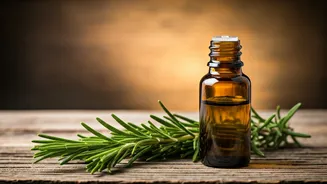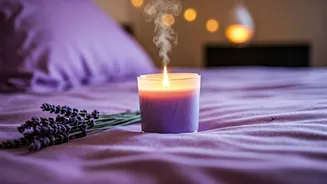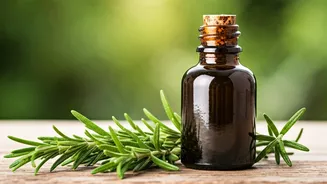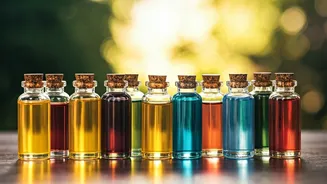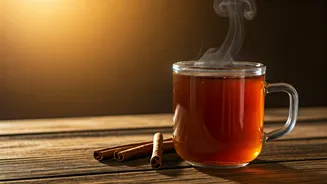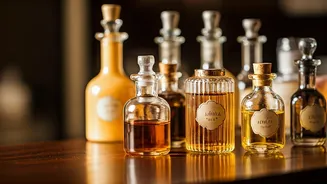Introduction to Oils
Essential oils, highly concentrated plant extracts, have become increasingly popular for their therapeutic properties and pleasant scents. Derived from
various plant parts like flowers, leaves, and roots, these oils capture the essence of nature in a potent form. These aromatic compounds are used in aromatherapy, personal care, and even household products. The focus is on understanding how to use these oils safely and effectively. Using essential oils offers a diverse range of potential benefits, from promoting relaxation and stress reduction to supporting respiratory health and enhancing mood. Before venturing into blending and using essential oils, it is important to have a basic understanding of what essential oils are and where they come from.
Blending Techniques Unveiled
Blending essential oils is an art that enables you to create personalized aromas tailored to your needs and preferences. Begin by familiarizing yourself with different oil categories: floral, citrus, woodsy, and herbal. Knowing these categories helps in creating compatible blends. Experiment by combining oils within the same category to start. For instance, pairing lavender (floral) with chamomile (floral) creates a soothing blend. As you become more comfortable, start trying combinations from different categories. When combining oils, the goal is not to overcomplicate things but to enhance each oil's unique characteristics. Consider the top, middle, and base notes of each oil to create a balanced aroma profile. Top notes evaporate quickly and provide the initial scent. Middle notes appear next, lending body to the blend, and base notes are the longest lasting, providing depth and longevity. A well-crafted blend will have all three notes harmonizing together.
Dilution: Safety First
Essential oils are highly concentrated, and direct application to the skin is generally not recommended due to the potential for irritation or sensitization. Dilution is a crucial step in ensuring safe use. The standard is to dilute essential oils in a carrier oil, such as sweet almond oil, jojoba oil, or fractionated coconut oil. Carrier oils help to reduce the concentration of the essential oil and facilitate its absorption into the skin. A common dilution ratio for adults is 1-3% essential oil. This means for every 1-3 drops of essential oil, you would add 100 drops (or about 5 ml) of carrier oil. For example, a 2% dilution would be 2 drops of essential oil in 100 drops of carrier oil. Always begin with a lower concentration, especially if you have sensitive skin or are trying a new oil for the first time. If using with children or the elderly, further dilute the oils.
Crafting Your Own Blends
Creating essential oil blends at home is a rewarding experience. Start by gathering your essential oils, carrier oils, and a dark-colored glass bottle for storage. Start by selecting a few essential oils that complement each other's scent and properties. For instance, if you want to promote relaxation, consider lavender, chamomile, and frankincense. Mix the essential oils in your chosen ratio, add them to the bottle, and then add the carrier oil. Secure the lid and gently roll the bottle to combine the oils. After blending, it is best to let the blend sit for a few days in a cool, dark place to allow the scents to meld together. This will result in a more complex and harmonious aroma. Label your blends clearly, including the essential oils used, the dilution percentage, and the date created. You can also keep a journal to document your blend recipes and notes on their effects to personalize your experience.
Storing Your Blends
Proper storage is critical to preserving the quality and extending the shelf life of your essential oil blends. Essential oils are sensitive to light, heat, and air, which can degrade their chemical composition and reduce their therapeutic benefits. Always store your blends in dark-colored glass bottles, such as amber or cobalt blue, to protect them from light. Keep the bottles tightly sealed to prevent oxidation. Store your blends in a cool, dark place, away from direct sunlight and heat sources. A pantry, a drawer, or a cupboard are all suitable locations. The ideal temperature is between 10-25°C. Keep your blends away from children and pets. With proper storage, many essential oil blends can last for 1-3 years. However, be mindful of any changes in scent or consistency, as these can indicate the oils are beginning to degrade.


